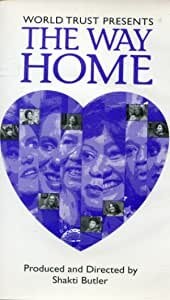
The Way Home 1998
Distributed by New Day Films, 22D Hollywood Ave., Hohokus, NJ 07423; 888-367-9154
Produced by Shaki Butler
VHS, color, 92 min.
Women's Studies, Multicultural Studies
Date Entered: 11/09/2018
Reviewed by Lori Foulke, Milton S. Eisenhower Library, Johns Hopkins UniversityFor this production, 64 women, representing a cross-section of cultures in America, met over a period of eight months to discuss and openly confront the painful impact of racism and other insidious forms of prejudice in their lives. Part of the Heart-to-Heart Conversations Program, the resulting video focuses on race as it intersects with gender, class,and sexual orientation. The women's stories are poignant and immediate, at turns sad, angry, bitter; but these tellings also reveal hope, love and the promise of a better future.
To facilitate discussion, the participating women were organized into discussion groups or councils, and viewers are exposed to women's comments within the context of these Councils -- African-American, Native American/Indigenous, Jewish, European-American, Latina, Asian American, Arab American, and Multi-racial. Excerpts of lively exchanges are organized by topic and presented under such evocative groupings as "Finding Identity," "Becoming American," and "Individual versus Cultural Reality."
Engaged in heartfelt dialogue, these women express their feelings about the "characteristics" that give them a sense of identity yet contribute to their oppression, through the prejudices of others and their own self-loathing: nationality, ethnicity, race, language, class, sexual orientation, religious affiliation, and physical appearance. Though the video depicts nothing but dialogue, it is absolutely riveting.
My initial response to viewing this video was that it would have benefitted from a cross-council discussion at the end, but upon further reflection, I've changed my mind. Keeping the councils separate allows viewers to see how women lumped into the same category actually reflect a wide range of feelings, experiences and issues. Likewise, by presenting dialogues along topical lines, viewers can see that women from the different councils hold many concerns and experiences in common. These two organizational aspects of the video work together to provide a sense of the complexities of prejudice and may serve to move viewers beyond a simple "us" vs "other" framework for examining prejudice and stereotyping. Through this video, viewers can develop a more nuanced view of how we all suffer from yet harbor our own stereotypes of those we consider somehow different from ourselves.
At 92 minutes, the video is a little on the long side, particularly for a class viewing, and the high emotional content makes it exhausting to watch. Yet the discussion and debate it is likely to spark makes it well worth the effort. Appropriate for collections in the social sciences. Recommended